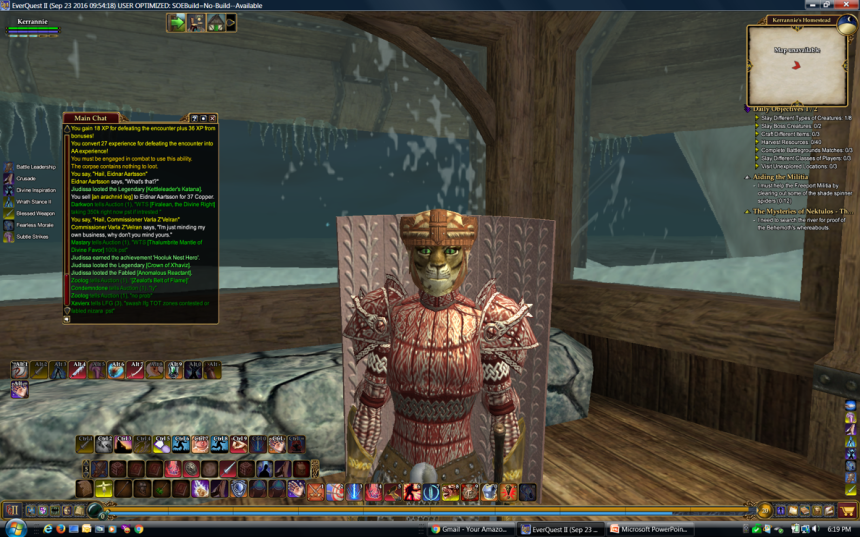Checklist for Novice Education Gaming Researchers
This is a cursory list of important concepts and items to consider when preparing to conduct educational research that involves the use of videogames.
- Use media selection criteria (e.g., Chapelle’s 2001 computer-assisted language learning media criteria or Jamieson, Chapelle, & Preiss, 2005 revised version)
- Determine reading level of videogame text by analyzing chat logs with the Flesch-Kincaid readability index. Make sure participants’ reading levels are within 2 grade levels of the index.
- Use vocabulary concordancer (e.g., Range software) to obtain frequently occurring words from chat log texts for assessment.
- Learn commands pertinent to research analysis to capture chat logs (e.g., /log) and/or images (e.g., print screen) to computer station public folder.
- Determine participants’ gaming literacy skills and complexity of the game.
- Determine participants’ propensity for pathological gaming behavior: low social competence, high impulsivity, and excessive gameplay (i.e., 30 hours) (Gentile, et al., 2011).
- Determine participants’ perceived relevance of gaming as a learning tool.
- Provide videogame tutorial and ongoing support.
- Provide explicit instruction on the benefits of strategies used to enhance learning.
- Consider participants’ preferences for gaming session location, time, and features.
- Consider Reese’s (2010) Flowometer to determine gamers’ self-perception of flow and other mental states of engagement to achieve optimal learning condition (i.e., advanced skill use during challenging gaming tasks).
- Provide warning of photosensitivity to persons with epilepsy (Daybreak Games, 2016).
- New! Use Discord as a communication backchannel during gameplay.
This list was shared during a gaming panel at the SITE 2017 conference in Austin, TX. Here’s the citation if you would like to reference it:
Willis, J., Greenhalgh, S., Nadolny, L., Liu, S., Aldemir, T., Rogers, S., Trevathan, M., Hopper, S. & Oliver, W. (2017). Exploring the Rules of the Game: Games in the Classroom, Game-Based Learning, Gamification, and Simulations. In Proceedings of Society for Information Technology & Teacher Education International Conference 2017 (pp. 475-480). Chesapeake, VA: Association for the Advancement of Computing in Education (AACE).
What advice would you add?
References
Chapelle, C. A. (2001). Computer applications in second language acquisition: Foundations for teaching, testing, and research. Cambridge, MA: Cambridge University Press.
Jamieson, J., Chapelle, C., & Preiss, S. (2005). CALL evaluation by developers, a teacher, and students. CALICO Journal, 23(1), 93-138. Retrieved from http://lib.dr.iastate.edu/cgi/viewcontent.cgi?article=1045&context=engl_pubs
Daybreak Games [Website]. (2016). Photosensitive warning. Retrieved from https://www.daybreakgames.com/photosensitive?locale=en_US.
Gentile, D., Hyekyung, C., Liau, A., Sim, T., & Li, D. (2011). Pathological video game use among youths: A two-year longitudinal study. Pediatrics, 127(2). doi:10.1542/peds.2010-1353
Range [Software application]. (2016). Retrieved from http://www.victoria.ac.nz/lals/about/staff/paul-nation
Reese, D. D. (2010). Introducing Flowometer: A CyGaMEs assessment suite tool. In R. Van Eck (Ed.), Gaming and cognition: Theories and practice from the learning science. Hershey, PA: Information Science Reference.

Pingback: Checklist for Novice Education Gaming Researchers - e-Learning Feeds